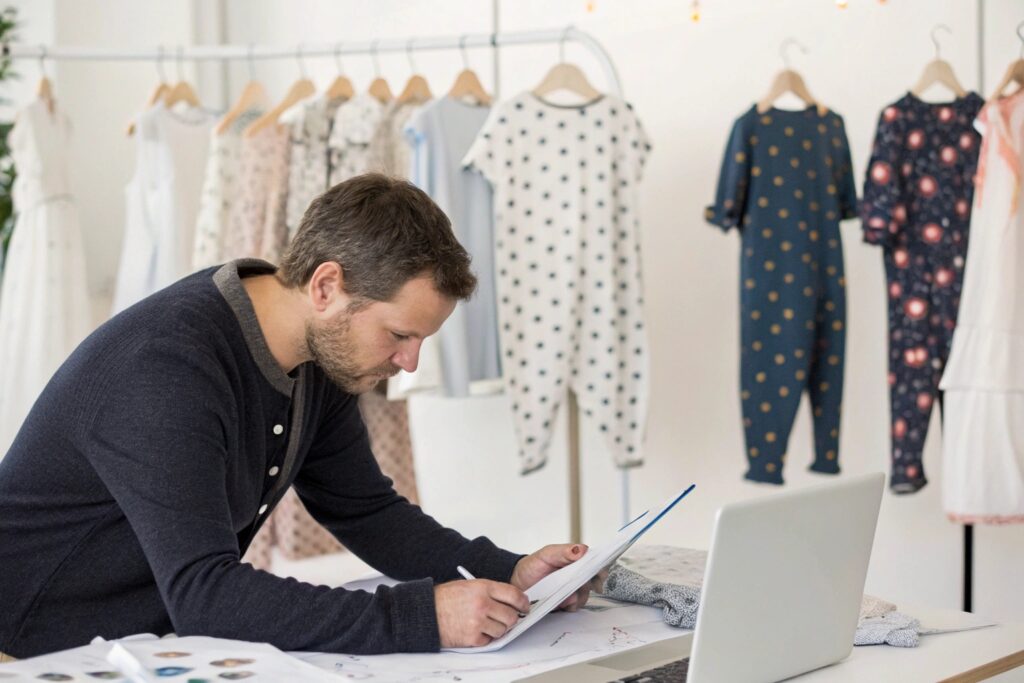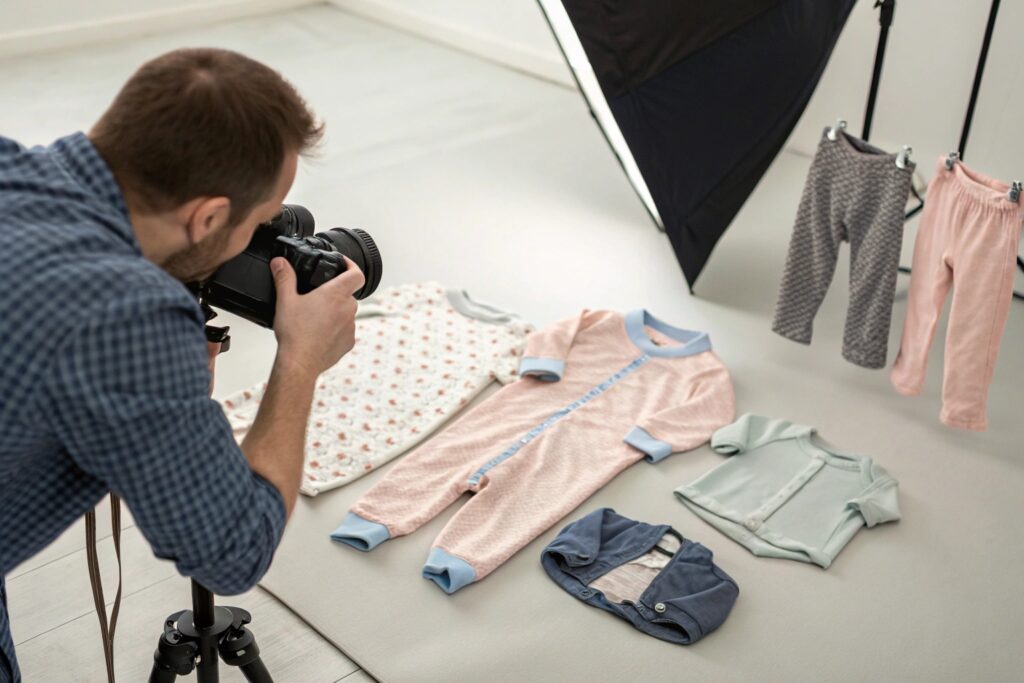Starting a kidswear line is exciting—but it takes more than cute designs. It’s about building a brand that parents trust and children love to wear.
To start a kid’s clothing line, develop a unique brand concept, design a collection, work with manufacturers, and launch with strong marketing strategies.
This guide walks you through each step—from concept to first sale—so you can launch your kidswear line with confidence.
How to Develop a Unique Kidswear Brand Concept?
Your brand is more than a logo. It’s how parents recognize you and why they choose your clothes over the rest.
Create a clear brand concept by identifying your niche, defining your ideal customer, and choosing a style that sets you apart.

What questions help shape your brand concept?
| Question | Why It Matters |
|---|---|
| Who is your target customer? | Baby, toddler, preteen? Luxury or budget? |
| What makes your brand different? | Sustainability? Culture? Special fits? |
| What story are you telling? | Builds emotional connection with buyers |
| What tone fits your brand? | Fun? Minimal? Bold? Educational? |
Examples of niche positioning:
- Organic cotton loungewear for toddlers
- Gender-neutral basics for modern parents
- Afrocentric fashion for kids
- Matching sets for siblings
- Adaptive wear for children with sensory needs
Your brand’s identity drives everything—from fabric choices to marketing messages.
What tools can help you define your concept?
- Pinterest or mood boards
- Brand story templates
- Audience avatars (describe your “ideal mom or dad”)
- Visual style guides (fonts, colors, tone)
At Fumao, we often work with founders who send us mood boards and sketches—we help translate that vision into real clothing lines.
What You Need to Launch Your First Clothing Collection?
Once you’ve defined your brand, you need actual garments. That means product development, design files, and a plan for launching.
To launch your kidswear collection, start with sketches or tech packs, pick your fabrics, create samples, and plan your inventory and packaging.

What are the essentials for your first collection?
| Element | Why It’s Important |
|---|---|
| Design sketches | Show your idea visually |
| Tech packs | Guide the factory with measurements, seams |
| Sample development | Test your design in real fabric |
| Size chart | Fit your age group accurately |
| Fabric selection | Choose softness, durability, stretch |
| Label/tag designs | Adds brand identity |
| Packaging | Unboxing matters—even for kidswear |
You don’t need to start with 20 styles. Many brands launch with just 3–5 key items:
- A romper or bodysuit
- A T-shirt or hoodie
- A pant or legging
- A signature accessory (bib, hat, bag)
What timeline should you expect?
| Stage | Time Needed |
|---|---|
| Concept + design sketching | 1–2 weeks |
| Sample development | 2–4 weeks |
| Bulk production | 4–6 weeks |
| Shipping & packaging | 1–2 weeks |
At Fumao, we help brands manage the full timeline and deliver DDP (Delivered Duty Paid) shipments with tracking and compliance included.
How to Find Manufacturers for Custom Kids’ Apparel?
Once your designs are ready, it’s time to find a factory that understands kidswear—and can grow with you.
Find a kidswear manufacturer that offers low MOQs, baby-safe materials, reliable sampling, and full support for small or growing brands.

What should you look for in a kidswear factory?
| Factory Feature | Why It Matters |
|---|---|
| Kidswear-specific experience | Understanding of sizing, fabrics, safety |
| OEKO-TEX®/CPSIA compliance | Ensures baby-safe materials |
| Small batch support (low MOQ) | Allows you to start without big risk |
| Sampling and revisions | Refine your product before bulk |
| Communication & reliability | Prevents delays and misunderstandings |
At Fumao, we offer:
- 300 pcs/style low MOQ
- CPSIA and OEKO-TEX® certified fabrics
- Free revisions on first samples
- Custom packaging and labels
- DDP shipping for North America, EU, and Australia
Where can you find factories?
- Google (“custom kidswear manufacturer + country”)
- Trade platforms (Alibaba, Faire, Maker’s Row)
- LinkedIn or fashion sourcing groups
- Referrals from other brands or designers
- Industry expos (e.g., MAGIC, CBME)
Pro Tip: Ask for real photos of previous kidswear work and samples—not just a catalog.
Tips for Marketing and Selling Your Kidswear Line Online?
Even the best clothes won’t sell if no one knows about them. Great marketing connects your brand to real parents.
To market and sell your kidswear line online, focus on storytelling, great product photos, smart social media, and direct-to-parent engagement.

What tools should you use to sell online?
| Tool | Purpose |
|---|---|
| Shopify or WooCommerce | Create your online store |
| Instagram/TikTok | Visual storytelling + influencer content |
| Email marketing | Turn visitors into repeat buyers |
| Reach baby shower and gift planners | |
| Facebook/Meta Ads | Target parents with interest-based ads |
We recommend starting with:
- A Shopify store with 3–5 core SKUs
- Instagram posts featuring your brand story, design process, and real babies
- Email list signup with a discount incentive
- A launch campaign with influencers or giveaways
What makes marketing work for kidswear?
- Relatable stories – Why did you start your brand?
- Soft, clear product photos – Show the details and fit
- Parent trust – Highlight safety certifications
- Bundles and milestone sets – Sell more with less choice
- Fast replies and support – Parents want peace of mind
Many of our clients see their first 50–100 sales from a mix of Instagram DMs and small influencer tags—then scale from there with ads and email.
Conclusion
Starting a kids’ clothing line is all about combining creativity with clear planning. With the right concept, reliable manufacturing, and strong digital presence, you can build a brand that grows—and grows with your customers.










